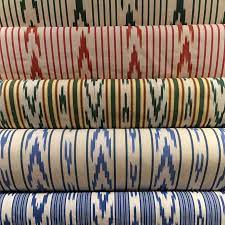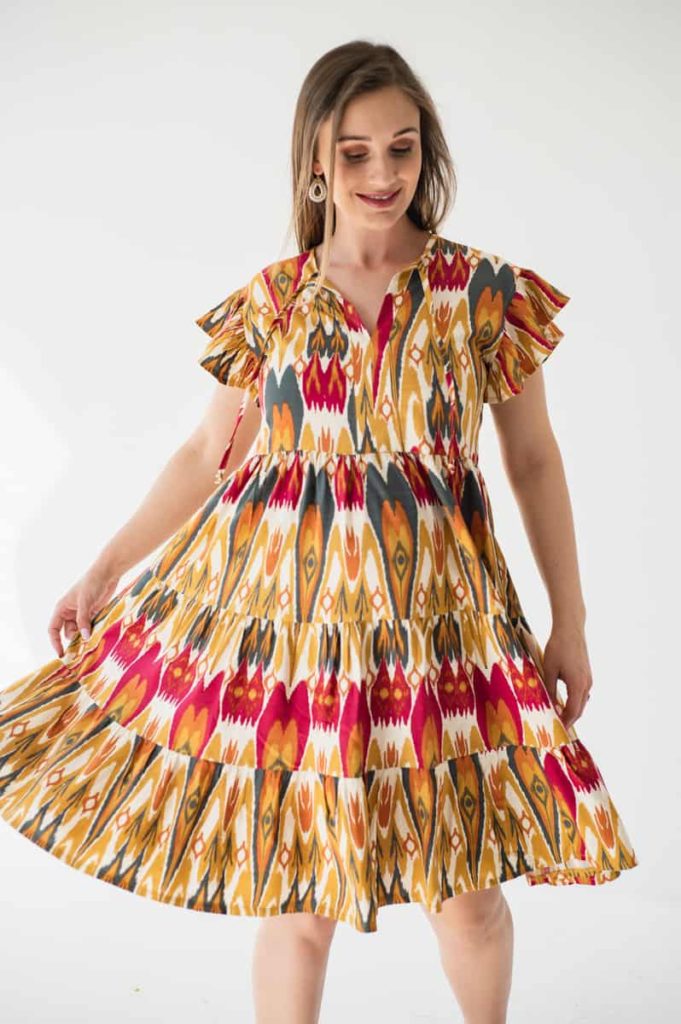In a world dominated by mass-produced textiles, Ikat fabric stands as a testament to the enduring allure of traditional craftsmanship. Ikat, pronounced ‘ee-KAHT,’ is a mesmerizing weaving technique that produces captivating patterns and designs through a meticulous dyeing and resist-dyeing process. This ancient art form has transcended time and geography, weaving its way into the hearts of fashion enthusiasts, interior decorators, and textile connoisseurs alike. In this blog post, we’ll delve into the fascinating world of Ikat fabric, exploring its rich history, unique production process, and its significance in contemporary fashion and design.
The History of Ikat
Ikat’s origins can be traced back to ancient civilizations in various parts of the world, from Central Asia to Southeast Asia, and even parts of South America. The term “Ikat” is derived from the Malay-Indonesian word ‘mengikat,’ which means to tie or bind. This aptly describes the core process of Ikat production, where the yarns are meticulously bound and dyed before being woven into vibrant patterns.
Over the centuries, Ikat has evolved through cultural exchanges, making it difficult to pinpoint a specific region as its birthplace. From the intricate Ikat saris of India to the bold geometric designs of Central Asia, each region has infused its flair and narrative into this timeless fabric.
The Ikat Production Process
The creation of Ikat fabric is an elaborate and time-consuming process that requires a high level of skill and precision. It all begins with the selection of high-quality yarn, usually silk, cotton, or wool, depending on the intended use of the fabric. The yarn is then divided into bundles and meticulously tied or bound at specific points using natural fibres or plastic strips. This binding process creates the desired resist patterns, preventing the dye from reaching certain areas of the yarn.
Next comes the dyeing phase, where artisans immerse the bound yarn into natural or synthetic dyes. The yarn is repeatedly dipped into different dye baths to achieve the desired colour intensity and complexity. The mastery lies in the precise alignment of the dye with the bound sections, ensuring that the patterns emerge flawlessly once the binding is removed.
After the dyeing process, the bound yarn is gently untied, revealing intricate and vibrant patterns. The dyed yarn is then ready to be carefully woven into Ikat fabric using traditional looms. The process is demanding, requiring immense concentration and patience, but the result is a true masterpiece that captures the essence of time-honoured craftsmanship.



Ikat in Contemporary Fashion and Design
In recent years, Ikat has experienced a renaissance in the world of fashion and design. Designers, recognizing its unique beauty and cultural significance, have incorporated Ikat fabrics into their collections, adding a touch of artistry and cultural heritage to modern aesthetics. From flowing dresses and tops to statement accessories, Ikat has proven to be a versatile and eye-catching addition to contemporary fashion.
In interior design, Ikat fabric brings a sense of warmth and authenticity to spaces. Whether used as upholstery for furniture or as decorative elements such as curtains and cushions, Ikat’s intricate patterns infuse rooms with a distinct personality and artistic flair.
Preserving the Legacy of Ikat
Despite its growing popularity, the traditional art of Ikat faces challenges in the modern world. Mass-produced imitations and synthetic dyes have led to a decline in demand for authentic, handcrafted Ikat. Furthermore, the knowledge and skills required to create Ikat fabrics are often passed down through generations, and there is a risk of this ancient craft being lost if not preserved and promoted.
As consumers, one way we can support the legacy of Ikat is by choosing ethically produced, authentic Ikat fabrics. Supporting artisan communities and fair trade initiatives ensures that these talented craftsmen can continue to create their beautiful works of art.



Ikat fabric is more than just a piece of cloth; it is a labour of love, a connection to our shared history, and a celebration of human creativity. This extraordinary art form continues to inspire and captivate, reminding us of the timeless beauty that lies in the craftsmanship of the past.
By valuing and preserving the tradition of Ikat, we contribute to the sustainability of a centuries-old art form and pay homage to the artisans whose hands have woven these remarkable textiles. Let us cherish and admire the intricate patterns and vivid colours of Ikat fabric, embracing its unique beauty as a symbol of cultural heritage and artistic excellence.
Check out some of our ikat fabrics in our webstore.
